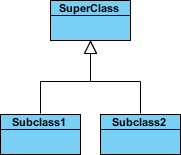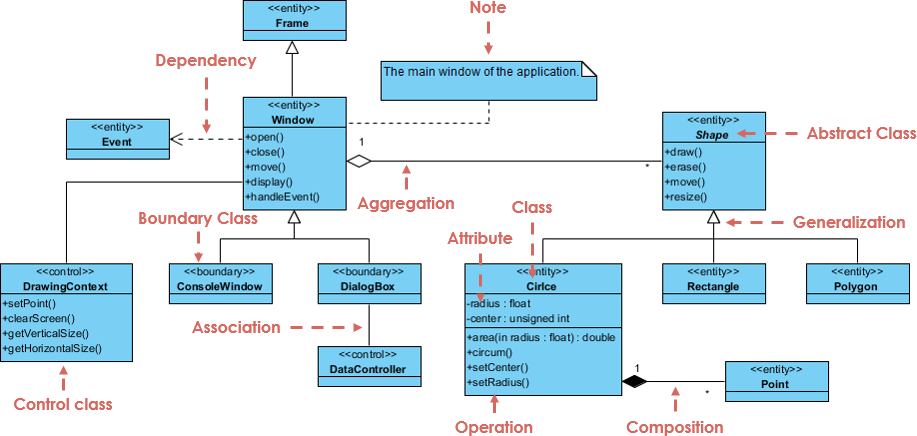Understanding Class Diagrams: Visualizing Relationships and Structure in Object-Oriented Systems
Class Diagram
Class diagrams provide a quick and easy way to describe the relationships between classes. They are essential for representing various design patterns.
Key Concepts
Before diving into the world of design patterns, let's go over the most commonly used relationships that you should remember:
- Association

Class 1 interacts with Class 2.
- Aggregation

Class 1 doesn't create Class 2 but depends on it.
- Composition

Class 1 is composed of N instances of Class 2.
- Dependency

Class 1 uses Class 2.
Inheritance

Class 1 inherits from Class 2.
Analyzing a Diagram

- Shape is an abstract class, indicated by the italic font style.
- Shape is a superclass, and Circle, Rectangle, and Polygon are derived from Shape. In other words, Circle is a specific type of Shape. This relationship represents generalization/inheritance.
- There is an association between DialogBox and DataController.
- Shape is part of Window, indicating an aggregation relationship. Shape can exist independently of Window.
- Point is part of Circle, representing a composition relationship. Point cannot exist without a Circle.
- Window depends on Event, but Event does not depend on Window.
- Circle has attributes of radius and center, indicating an entity class.
- Circle has methods named area(), circum(), setCenter(), and setRadius().
- The radius parameter in Circle is an input parameter of type float.
- The area() method of the Circle class returns a value of type double.
- Some attributes and method names are hidden for Rectangle and other classes in the diagram.
